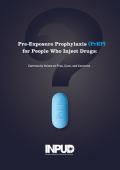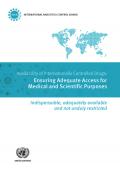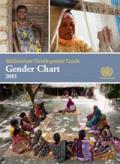What's New
Displaying results 2661 - 2670 of 4914

Resource | Guidelines,
This guidance has been developed to provide advice on the prevention of potential sexual transmission of Zika virus. The primary transmission route of Zika virus is via the Aedes mosquito. However, sexual transmission of Zika virus may also be possible, with limited evidence recorded in a few cases. This is of concern due to an association between Zika virus infection and potential complications, including microcephaly and Guillain-Barré syndrome.
The current evidence base on Zika virus remains extremely limited. This guidance will be reviewed and the recommendations updated as new evidence emerges.

Resource | Presentations,
Improving Efficiency in Health World Bank Group Conference
February 4, 2016

Resource | Publications,
Pre-Exposure Prophylaxis (PrEP), “the daily use of antiretrovirals in HIV-uninfected people to block the acquisition of HIV infection,” is a new tool for preventing HIV transmission and has sparked considerable discussion and debate in many communities.
From the International Network of People who Use Drugs, this report summarizes recent research on the knowledge, beliefs, and opinions of people who inject drugs about the pros, cons, and concerns of PrEP for people who inject drugs.

Resource | Guidelines,
Project Inform and Outshine NW partnered to write this PrEP resource guide for women who are transgender and for other trans/gender-variant people who were assigned male sex at birth.
By the end of this book, you will:
1. know how to find more information about PrEP;
2. know how to find an accessible healthcare provider;
3. know how to to ask for PrEP;
4. know where to get support to advocate for yourself if you run into any hurdles along the way; and
5. have a better idea whether PrEP is an HIV prevention tool you want to use.

Resource | Publications,
The Board is presenting this special report to Member States in the hope that the analysis and recommendations presented therein may assist them in the development of national policies and control systems that are capable of achieving the goals of the international drug control conventions in relation to ensuring availability of narcotic drugs and psychotropic substances. Member States have already underlined the importance of this issue in a number of resolutions and political declarations adopted by the Commission on Narcotic Drugs. They also referred to it in the Political Declaration of the High-Level Meeting of the General Assembly on the Prevention and Control of Non-communicable Diseases and in resolution WHA67.19 of the World Health Assembly, on strengthening of palliative care as a component of comprehensive care throughout the life course.

Resource | Publications,
This guide to Supervision, Monitoring and Evaluation (SM&E) has been developed to assist the program managers and staff of RNTCP and NACP programmes at various levels to effectively implement collaborative TB-HIV activities. It is intended to facilitate the quality implementation of TB HIV collaborative activities, collection of standardized data, and help in the interpretation and dissemination of these data for programme improvement. It also aims to ensure uniformity across all stakeholders involved in TB-HIV collaborative activities and harmonisation of data collection at various levels by developing a core set of globally accepted, standardized indicators for monitoring and evaluating programme performance. The data collected using these standardized indicators will provide further evidence for policies related to collaborative TB/HIV activities.

Resource | Guidelines,
The objectives of these updated WHO Guidelines are to provide evidence-based recommendations for the treatment of persons with hepatitis C infection using, where possible, all-oral combinations of these new medicines, also called direct-acting antivirals (DAAs). The Guidelines also provide recommendations on the preferred regimens based on a patient’s HCV genotype and clinical history, and assess the appropriateness of continued use of the existing medicines. The key audience for these guidelines are policy-makers in low- and middle-income countries who formulate country-specific treatment guidelines, and who plan infectious disease treatment programmes and services, in addition to those people responsible for delivering treatment. The Guidelines are appropriate for all countries, including high-income countries.

Resource | Fact Sheets,
In January 2016, there were 804 new HIV Ab sero-positive individuals. This was 50% higher compared to the same period last year (536) and was the highest number of cases ever reported since 1984. Eighty-eight percent of the cases were asymptomatic at the time of reporting.

Resource | Publications,
The 2015 Gender Chart shows that while progress has been made in a number of the gender dimensions of the MDGs, such as in education, where the gender gap in youth literacy has narrowed, and in maternal mortality, which has declined by nearly 44 per cent since 1990, more needs to be done. Women and girls need to be at the centre of any development imperative. And now, with Member States jointly adopting the ambitious 2030 Agenda for Sustainable Development, the aim is clear: Pick up where the MDGS left off, and ensure a comprehensive agenda that fully addresses gender equality and women’s empowerment head on.

Resource | Guidelines,
The purpose of this document is to provide guidance to national AIDS programmes and partners on the use of core indicators to measure and report on the country response.
These guidelines are designed to improve the quality and consistency of data collected at the country level, enhancing the accuracy of conclusions drawn at national, regional and global levels.





